[1].
Kuss, D. J., & Lopez-Fernandez,
O. (2016). Internet Addiction and Problematic Internet Use: A Systematic Review
of Clinical Research. World Journal of Psychiatry, 6(1), 143
[2].
Davis, R. A. (2001). A Cognitive-Behavioral
Model of Pathological Internet Use. Computers in human behavior, 17(2), 187-195.
[3].
Weinstein, A., & Lejoyeux,
M. (2010). Internet Addiction or Excessive Internet Use. The American Journal
of Drug and Alcohol Abuse, 36(5), 277-283
[4].
Young, K. S., & De Abreu,
C. N. (Eds.). (2010). Internet Addiction: A Handbook and Guide to Evaluation and
Treatment. John Wiley & Sons.
[5].
Bener, A., Al-Mahdi, H. S.,
Ali, A. I., Al-Nufal, M., Vachhani, P. J., & Tewfik, I. (2011). Obesity and
Low Vision as A Result of Excessive Internet Use and Television Viewing. International
Journal of Food Sciences and Nutrition, 62(1), 60-62.
[6].
Mythily, S., Qiu, S., &
Winslow, M. (2008). Prevalence And Correlates of Excessive Internet Use Among Youth
in Singapore. Annals Academy of Medicine Singapore, 37(1), 9.
[7].
Beutel, M. E., Brähler, E.,
Glaesmer, H., Kuss, D. J., Wölfling, K., & Müller, K. W. (2011). Regular and
problematic leisure-time internet use in the community: results from a german population-based
survey. Cyberpsychology, Behavior, and Social Networking, 14(5), 291-296.
[8].
Sung, J., Lee, J., Noh, H.
M., Park, Y. S., & Ahn, E. J. (2013). Associations Between the Risk of Internet
Addiction and Problem Behaviors Among korean adolescents. Korean journal of family
medicine, 34(2), 115.
[9].
Poli, R., & Agrimi, E.
(2012). Internet Addiction Disorder: Prevalence In an Italian Student Population.
Nordic Journal of Psychiatry, 66(1), 55-59.
[10].
Ha, J. H., Yoo, H. J., Cho,
I. H., Chin, B., Shin, D., & Kim, J. H. (2006). Psychiatric Comorbidity Assessed
In Korean Children And Adolescents Who Screen Positive For Internet Addiction. Journal
of Clinical Psychiatry, 67(5), 821.
[11].
Ko, C. H., Yen, J. Y., Chen,
C. S., Yeh, Y. C., & Yen, C. F. (2009). Predictive Values of Psychiatric Symptoms
for Internet Addiction in Adolescents: A 2-Year Prospective Study. Archives of
pediatrics & adolescent medicine, 163(10), 937-943.
[12].
Morrison, C. M., & Gore,
H. (2010). The Relationship Between Excessive Internet Use and Depression: A Questionnaire-Based
Study of 1,319 young people and adults. Psychopathology, 43(2), 121-126.
[13].
Canan, F., Ataoglu, A., Ozcetin,
A., & Icmeli, C. (2012). The Association Between Internet Addiction and Dissociation
Among Turkish College Students. Comprehensive Psychiatry, 53(5), 422-426.
[14].
Kheyrkhah, F. G. H. A. B.
E. L. I., GHABELI, J. A., & Gouran, A. (2010). Internet Addiction, Prevalence
and Epidemiological Features in Mazandaran Province, Northern Iran.
[15].
Tsai, H. F., Cheng, S. H.,
Yeh, T. L., Shih, C. C., Chen, K. C., Yang, Y. C., & Yang, Y. K. (2009). The
Risk Factors of Internet Addiction—A Survey of University Freshmen. Psychiatry
Research, 167(3), 294-299.
[16].
Demetrovics, Z., Szeredi,
B., & Rózsa, S. (2008). The three-factor model of Internet addiction: The development
of the Problematic Internet Use Questionnaire. Behavior research methods, 40, 563-574.
[17].
Bergmark, K. H., Bergmark,
A., & Findahl, O. (2011). Extensive internet Involvement—Addiction or Emerging
Lifestyle? International Journal of Environmental Research and Public Health, 8(12),
4488-4501.
[18].
Lam, L. T., Peng, Z., Mai,
J., & Jing, J. (2009). The Association Between Internet Addiction and Self-Injurious
Behaviour Among Adolescents. Injury prevention, 15(6), 403-408.
[19].
Bakken, I. J., Wenzel, H.
G., Götestam, K. G., Johansson, A., & Øren, A. (2009). Internet addiction among
Norwegian adults: A Stratified Probability Sample Study. Scandinavian Journal
of Psychology, 50(2), 121-127.
[20].
Lin, M. P., Ko, H. C., &
Wu, J. Y. W. (2011). Prevalence And Psychosocial Risk Factors Associated with Internet
Addiction in A Nationally Representative Sample of College Students in Taiwan. Cyberpsychology,
Behavior, and Social Networking, 14(12), 741-746.
[21].
Cheng, C., & Li, A. Y.
L. (2014). Internet Addiction Prevalence and Quality Of (Real) Life: A Meta-Analysis
Of 31 Nations Across Seven World regions. Cyberpsychology, Behavior, and Social
Networking, 17(12), 755-760.
[22].
Sharma, M. K., Rao, G. N.,
Benegal, V., Thennarasu, K., & Thomas, D. (2017). Technology Addiction Survey:
An Emerging Concern for Raising Awareness and Promotion Of Healthy Use Of technology.
Indian Journal of Psychological medicine, 39(4), 495-499.
[23].
Sharma, A., & Sharma,
R. (2018). Internet Addiction and Psychological Well-Being Among College Students:
A Cross-Sectional Study from Central India. Journal Of Family Medicine and Primary
Care, 7(1), 147.
[24].
Rajanna, S. H., & Sharma,
M. K. (2016). Exploration Of Technology Use Pattern Among Teenagers and Its Relationship
with Psychological Variables. Asean Journal of Psychiatry, 239-249.
[25].
Guan, S. S. A., & Subrahmanyam,
K. (2009). Youth Internet use: Risks and Opportunities. Current Opinion in Psychiatry,
22(4), 351-356.
[26].
Yang, G., Cao, J., Li, Y.,
Cheng, P., Liu, B., Hao, Z., ... & Ren, Z. (2019). Association Between Internet
Addiction and The Risk of Musculoskeletal Pain In Chinese College Freshmen–a Cross-Sectional
Study. Frontiers in Psychology, 10, 1959.
[27].
Güneş,
M., Demirer, B., & Şimşek, A. (2023). The Relationship Between Internet Addiction
with Eating Disorders and Musculoskeletal Health Among University Students. Journal
of Public Health, 31(12), 2115-2121.
[28].
Li, G., & Dai, X. Y.
(2009). Control Study of Cognitive-Behavior Therapy in Adolescents With internet
addiction disorder. Chinese mental Health Journal.
[29].
Tamura,
H., Nishida, T., Tsuji, A., & Sakakibara, H. (2017). Association between Excessive
Use of Mobile Phone and Insomnia and Depression Among Japanese Adolescents. International
Journal of Environmental Research and Public Health, 14(7), 701.
[30].
Cao,
F., Su, L., & Gao, X. (1991). Control Study of Group Psychotherapy on Middle
School Students with Internet Overuse. Chinese Mental Health Journal.
[31].
Bai, Y., & Fan, F. (1991).
The Effects of Group Counselling on Internet-Dependent College Students. Chinese
Mental Health Journal
[32].
Dell Osso, B., Hadley, S.,
Allen, A., Baker, B., Chaplin, W. F., & Hollander, E. (2008). Escitalopram in
the Treatment of Impulsive-Compulsive Internet Usage Disorder: An Open-Label Trial
Followed by A Double-Blind Discontinuation Phase. Journal of Clinical Psychiatry,
69(3), 452.
[33].
Choi,
K., Son, H., Park, M., Han, J., Kim, K., Lee, B., & Gwak, H. (2009). Internet
Overuse and Excessive Daytime Sleepiness in Adolescents. Psychiatry And Clinical
Neurosciences, 63(4), 455-462.
[34].
Greenfield, D. N. (2000).
Suchtfalle Internet: Hilfe für Cyberfreaks, Netheads Und Ihre Partner. Walter
[35].
Lanjun,
Z. (2009). The Applications of Group Mental Therapy and Sports Exercise Prescriptions
In The Intervention Of Internet Addiction Disorder. Psychological Science (China),
32(3), 738-41.
[36].
Burke, B. L., Arkowitz, H.,
& Menchola, M. (2003). The Efficacy of Motivational Interviewing: A Meta-Analysis
of Controlled Clinical trials. Journal of Consulting and Clinical Psychology,
71(5), 843.
[37].
Meyers, R. J., & Miller,
W. R. (Eds.). (2001). A Community Reinforcement Approach to Addiction Treatment.
Cambridge University Press
[38].
Miller,
N. H. (2010). Motivational Interviewing as A Prelude to Coaching in Healthcare Settings.
Journal of cardiovascular Nursing, 25(3), 247-251.
[39].
Peukert,
P., Sieslack, S., Barth, G., & Batra, A. (2010). Internet-und computerspielabhängigkeit.
Psychiatrische praxis, 37(05), 219-224.Poli, R., & Agrimi, E. (2012). Internet
Addiction Disorder: Prevalence In an Italian Student Population. Nordic Journal
of Psychiatry, 66(1), 55-59.
[40].
Twohig,
M. P., & Crosby, J. M. (2010). Acceptance And Commitment Therapy as A Treatment
for Problematic Internet Pornography Viewing. Behavior Therapy, 41(3), 285-295.
[41].
Grill
JD, Bateman RJ, & Buckles VA (2015). Survey of Attitudes Toward Clinical Trials
and Genetic Disclosure in Autosomal Dominant alzheimer’s disease. Alzheimer's Research
& Therapy. 7: 50
[42].
Smith,
S. K., Selig, W., Harker, M., Roberts, J. N., Hesterlee, S., Leventhal, D., &
Abernethy, A. P. (2015). Patient Engagement Practices in Clinical Research Among
Patient Groups, Industry, And Academia in The United States: a Survey. PloS ONE,
10(10), e0140232.
[43].
Marcano
Belisario JS, Jamsek J, Huckvale K, O'Donoghue J, Morrison CP, & Car J. (2015).
Comparison of Self-Administered Survey Questionnaire Responses Collected Using Mobile
Apps Versus Other Methods. Cochrane Database of Systematic Reviews, Issue 7. Art.
No.: MR000042.
[44].
Young,
K. S. (1999). Internet Addiction: Symptoms, Evaluation, And Treatment. Innovations
in Clinical Practice [serial on the Internet]. 1999; 17.
[45].
Kroenke,
K., Spitzer, R. L., Williams, J. B., & Löwe, B. (2009). An Ultra-Brief Screening
Scale for Anxiety and Depression: The PHQ–4. Psychosomatics, 50(6), 613-621.
[46].
Goel,
D., Subramanyam, A., & Kamath, R. (2013). A study on the Prevalence of Internet
Addiction and Its Association with Psychopathology in Indian Adolescents. Indian
Journal of Psychiatry, 55(2), 140.
[47].
Zou,
Y., Xia, N., Zou, Y., Chen, Z., & Wen, Y. (2019). Smartphone Addiction May Be
Associated with Adolescent Hypertension: a cross-Sectional Study Among Junior School
Students in China. BMC Pediatrics, 19, 1-8.
[48].
Lee,
H. W., Choi, J. S., Shin, Y. C., Lee, J. Y., Jung, H. Y., & Kwon, J. S. (2012).
Impulsivity in Internet Addiction: A Comparison With pathological gambling. Cyberpsychology,
Behavior, And Social Networking, 15(7), 373-377.
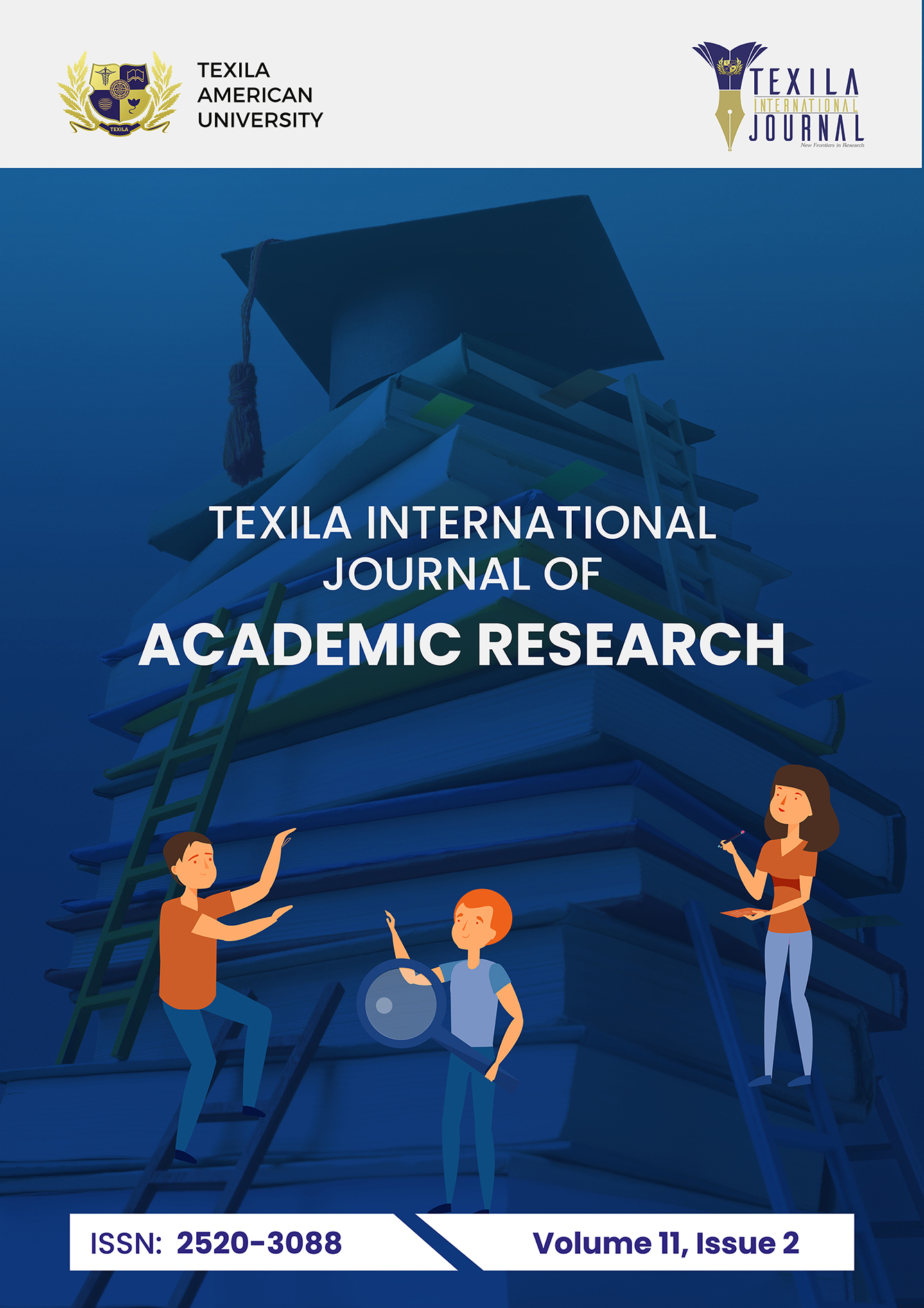
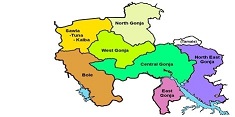 Understanding the General Overview of Conflict Transformation and its Dynamics in the Savannah Region of GhanaAuthor: Abutu KaporiDOI: 10.21522/TIJAR.2014.11.02.Art001
Understanding the General Overview of Conflict Transformation and its Dynamics in the Savannah Region of GhanaAuthor: Abutu KaporiDOI: 10.21522/TIJAR.2014.11.02.Art001 Unveiling the Potential of Open Strategy: An Exposé of Strategic Planning in the South African Mining SectorAuthor: Robert Ward GrayDOI: 10.21522/TIJAR.2014.11.02.Art003
Unveiling the Potential of Open Strategy: An Exposé of Strategic Planning in the South African Mining SectorAuthor: Robert Ward GrayDOI: 10.21522/TIJAR.2014.11.02.Art003 Traits and Skills Required by Project Managers to Complete Construction Projects in Guyana's Civil Engineering FirmsAuthor: Latchman SinghDOI: 10.21522/TIJAR.2014.11.02.Art005
Traits and Skills Required by Project Managers to Complete Construction Projects in Guyana's Civil Engineering FirmsAuthor: Latchman SinghDOI: 10.21522/TIJAR.2014.11.02.Art005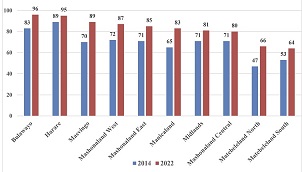 Digitalisation and Economic Inclusion: Lessons from Rural Women in Umguza District ZimbabweAuthor: Ashley Eve KudiwaDOI: 10.21522/TIJAR.2014.11.02.Art006
Digitalisation and Economic Inclusion: Lessons from Rural Women in Umguza District ZimbabweAuthor: Ashley Eve KudiwaDOI: 10.21522/TIJAR.2014.11.02.Art006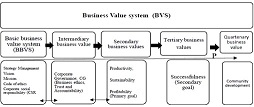 The Ten Business Values System Theory: A Literature-based AnalysisAuthor: Lindunda WamunyimaDOI: 10.21522/TIJAR.2014.11.02.Art007
The Ten Business Values System Theory: A Literature-based AnalysisAuthor: Lindunda WamunyimaDOI: 10.21522/TIJAR.2014.11.02.Art007 Risk Management Considerations for Civil Engineering Consultancy Services in GuyanaAuthor: Latchman SinghDOI: 10.21522/TIJAR.2014.11.02.Art009
Risk Management Considerations for Civil Engineering Consultancy Services in GuyanaAuthor: Latchman SinghDOI: 10.21522/TIJAR.2014.11.02.Art009 The Effect of Internal Factors on Financial Performance of Pharmaceutical Wholesale Companies in ZimbabweAuthor: Priscilla KusenaDOI: 10.21522/TIJAR.2014.11.02.Art010
The Effect of Internal Factors on Financial Performance of Pharmaceutical Wholesale Companies in ZimbabweAuthor: Priscilla KusenaDOI: 10.21522/TIJAR.2014.11.02.Art010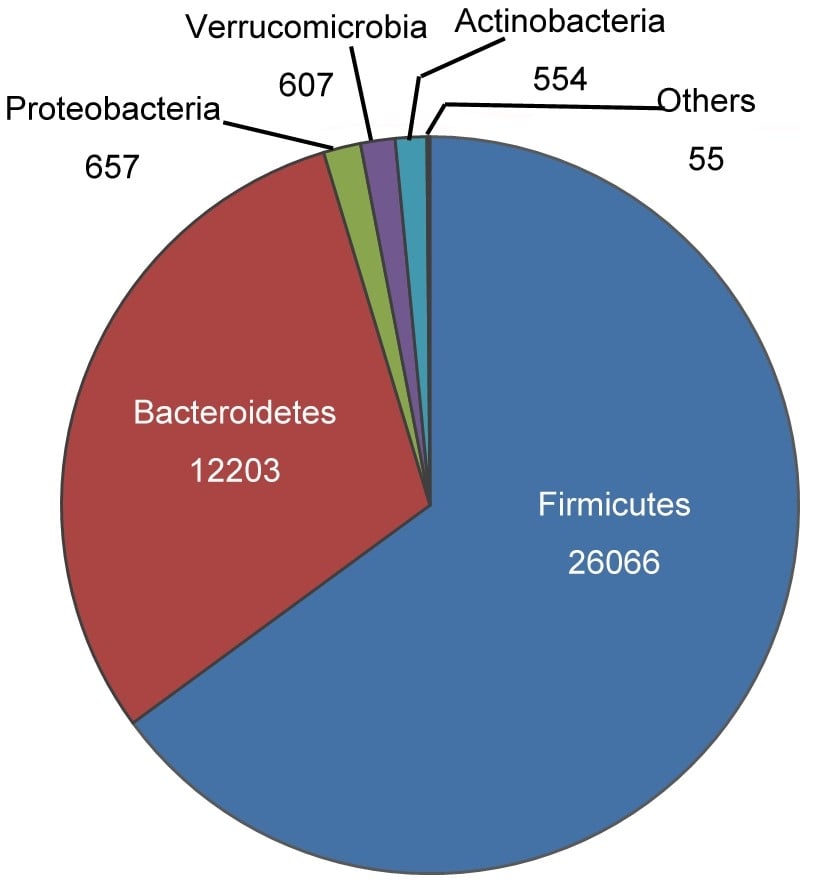 Intestinal Microbiome and Antimicrobial Resistivity: A Study in Recent TimesAuthor: Shayeri DasDOI: 10.21522/TIJAR.2014.11.02.Art011
Intestinal Microbiome and Antimicrobial Resistivity: A Study in Recent TimesAuthor: Shayeri DasDOI: 10.21522/TIJAR.2014.11.02.Art011 A Cross Sectional Study in Indian Adult Population to Assess the Internet Addiction and its Effect on the Quality of SleepAuthor: Shilendra PandeyDOI: 10.21522/TIJAR.2014.11.02.Art012
A Cross Sectional Study in Indian Adult Population to Assess the Internet Addiction and its Effect on the Quality of SleepAuthor: Shilendra PandeyDOI: 10.21522/TIJAR.2014.11.02.Art012 Assessment of the Internet Addiction Disorder and its Association with Anxiety and Depression in Young Indian Adults: A Cross Sectional StudyAuthor: Shilendra PandeyDOI: 10.21522/TIJAR.2014.11.02.Art014
Assessment of the Internet Addiction Disorder and its Association with Anxiety and Depression in Young Indian Adults: A Cross Sectional StudyAuthor: Shilendra PandeyDOI: 10.21522/TIJAR.2014.11.02.Art014 Adaptive Study Design Methodology vs. Standard Randomized Clinical Trial in Different Therapeutic Area: A ReviewAuthor: Srividhya NarasimhanDOI: 10.21522/TIJAR.2014.11.02.Art015
Adaptive Study Design Methodology vs. Standard Randomized Clinical Trial in Different Therapeutic Area: A ReviewAuthor: Srividhya NarasimhanDOI: 10.21522/TIJAR.2014.11.02.Art015
